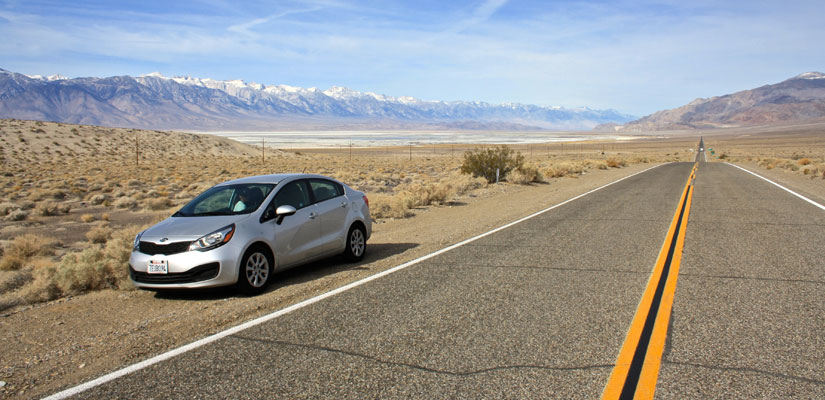There is no mode of transport more maligned than hitchhiking. Get over your fear with these top hitchhiking tips from experienced travellers
I hate hitchhiking. Perhaps it’s the retiring Brit in me but I hate the sense of embarrassment when I am refused, and the sense of imposition when I am accepted.
I hate the feeling of placing a request at the feet of strangers and expecting them to say yes. I hate the awkwardness of small talk and the permeating feeling of indebtedness. If I could help it, I would never do it.
Of course, travelling through remote villages in the South Pacific meant I had to swallow my hate and hope for the best. Sometimes, buses wouldn’t come for days let alone hours, leaving hitchhiking as the only option.
Despite the innumerable warnings around hitchhiking, it can be a cheap, easy and safe way to get around, especially if you know how to do it well.
To help fellow newbies, I polled a number of experienced travellers and rounded up their best hitchhiking tips.
Check local laws
Hitchhiking is illegal in some areas and along certain road types, so make sure you check the rules beforehand. Ask a local to find out if hitchhiking is common and safe. If you are carrying any substances that may cause problems with the police (tut tut), be aware that hitchhiking may attract the attention of local law enforcement.
Hitchhike with a partner
A lone hitchhiker looks like a drifter while two hitchhikers look like travelling friends. If possible, travel with someone else. Some experts swear that two females fare the best, but we’ve been told by several hitchhikers that a mixed-gender couple works better. A driver picking up two females may worry that he’ll be accused of something unsavoury whereas a male-female couple seems like a safe bet with fewer complications.
Learn the right gesture
Make sure you know the local gesture for stopping a car as the thumb up sign isn’t always appropriate. In parts of the South Pacific for example you would be expected to hold out your hand, palm down, and move it up and down as if instructing the car to slow down.
Find a good location
Instead of trying to hitch from inside a city where most people will be travelling within the city limits, set up at the last traffic light in town or a slip road/on-ramp. This will increase your chances of finding a driver travelling a long distance. Ensure that drivers have plenty of time to see you and that there is a safe place for them to pull over. Use Hitchwiki to find out about specific locations. If your driver is taking you only part of the way, ask to be dropped off at a similarly good spot instead of the city center.
Think twice about making a sign
On one hand, a sign is helpful as it clearly indicates where you are headed and minimises the number of false starts. However, it may also work against you: some drivers who may have taken you part of the way may not stop as they’re not going all the way to your destination. Consider using general directions instead (‘East’ or ‘West’).
Wear clean clothes in bright colours
Wearing a bright colour will not only make you more visible but also more approachable. White is a good choice as it implies cleanliness. Try to look clean and groomed. No-one wants to shack up next to the stereotypical smelly backpacker on a long ride.
Ditch the shades
Don’t wear shades or a hat; let drivers see your face. Make eye contact and offer an easy smile. This will make you seem more trustworthy and approachable. One hitchhiker friend has a theory that keeping your forearms bare makes you seem less threatening (i.e. nothing hidden in your sleeves). I have no idea if this works but it can’t hurt.
Be confident
Don’t limply stick out your hand with a sheepish shrug. Stand near the road, hold your hand out high, be confident and smile. Drivers only have a few seconds to make their decision and if you’re half hearted, they will be too.
Wave your thanks even if they don’t stop
Smile, nod or wave thanks to drivers that make eye contact, especially if they indicate that they can’t take you. It will go some way in dispelling the general fear around hitchhiking.
Be safe
- Don’t be afraid to decline a ride. If the driver seems intoxicated, erratic or just plain creepy, ask them where they’re going and either tell them you’re going another way or just give them a general “thank you, but I’m hoping to go further.”
- Note the vehicle’s registration number and ideally the make, model, and color too. If possible, text the information to a friend.
- Sit in the front passenger seat if possible as the rear ones may have a child lock.
- Keep your essentials within easy reach in case you need to make a quick exit. If your big backpack is locked in the boot, be prepared to lose it.
- Keep your phone charged. Buy a solar charger to top it up on the go.
- Consider carrying a personal safety system (e.g. pepper spray). You probably won’t need but it’s best to be prepared.
- If you have accepted a ride but really want to get out of the vehicle, pretend that you need to be sick. Tell the driver not to wait and stride off to the side of the road.
Learn the language
If you’re travelling in terrain where you don’t speak the language, at least pick up a phrase or two beforehand. Lone drivers in particular may pick up hitchhikers for the company. A deathly awkward silence won’t put either of you at ease.
Keep some sweets with you
Whether it’s a pack of sweets or a bar of chocolate, having something to offer the driver is a useful way to break the ice especially if you don’t speak their language.
Consider crossing borders yourself
Land borders are a good place to get a ride but bear in mind that drivers may be wary of carrying hitchhikers across borders. You may find it easier to cross the border yourself and trying to find a ride on the other side. Note that some borders have a strip of no-man’s land in between which may not be possible to cross on foot.
Always carry a good map
Even if you have Google Maps, great coverage and a fully charged phone, always carry a paper map and preferably a compass too.
Have a backup plan
You may have to walk all day or pay for an overnight stay. Have a plan B wherever possible. If it means doing the same thing all over again the next day, try not to get disheartened. The key is to look happy, clean, friendly and approachable. Ask yourself ‘would I pick myself up?’ and amend your behaviour or appearance accordingly.










